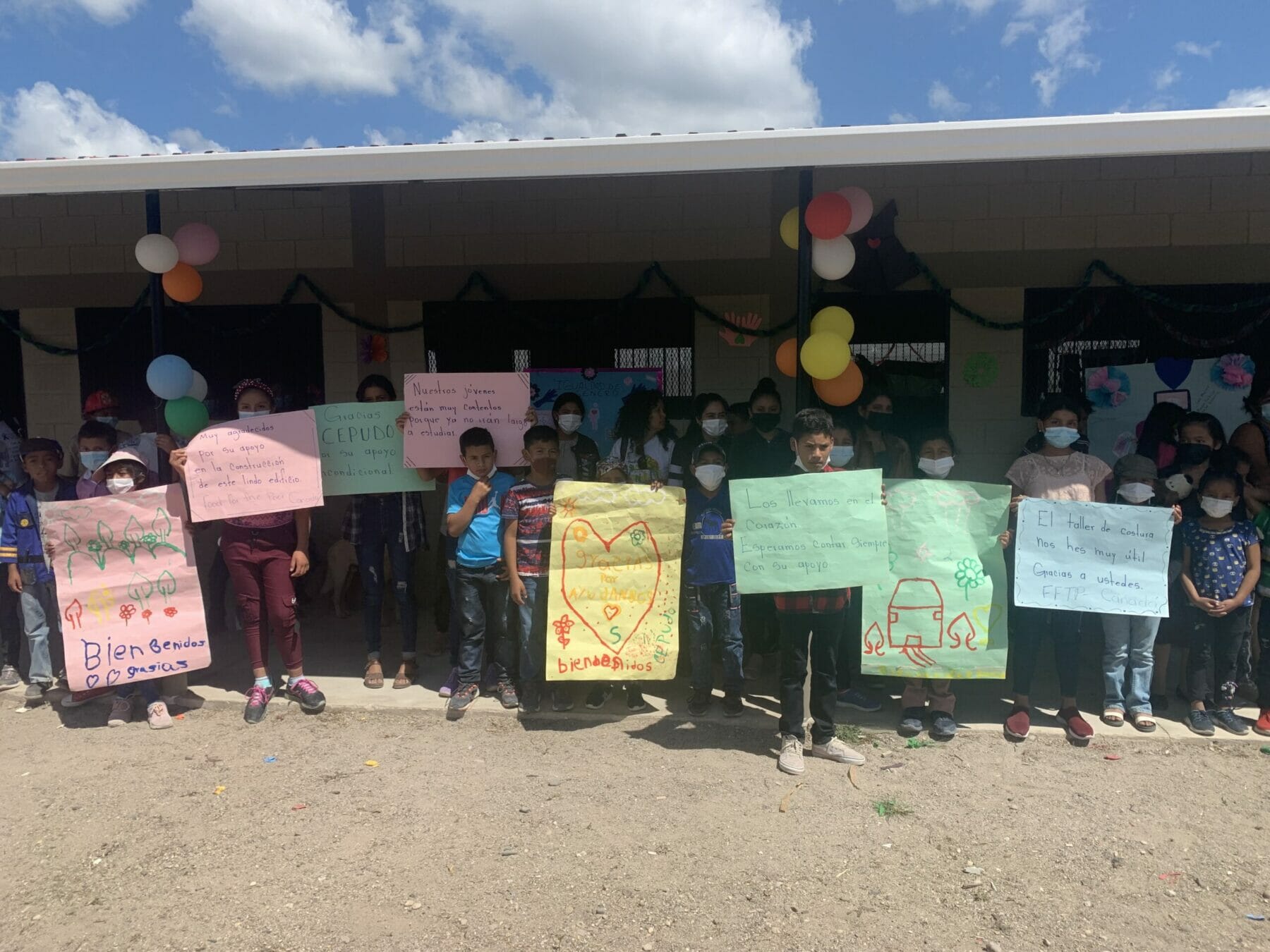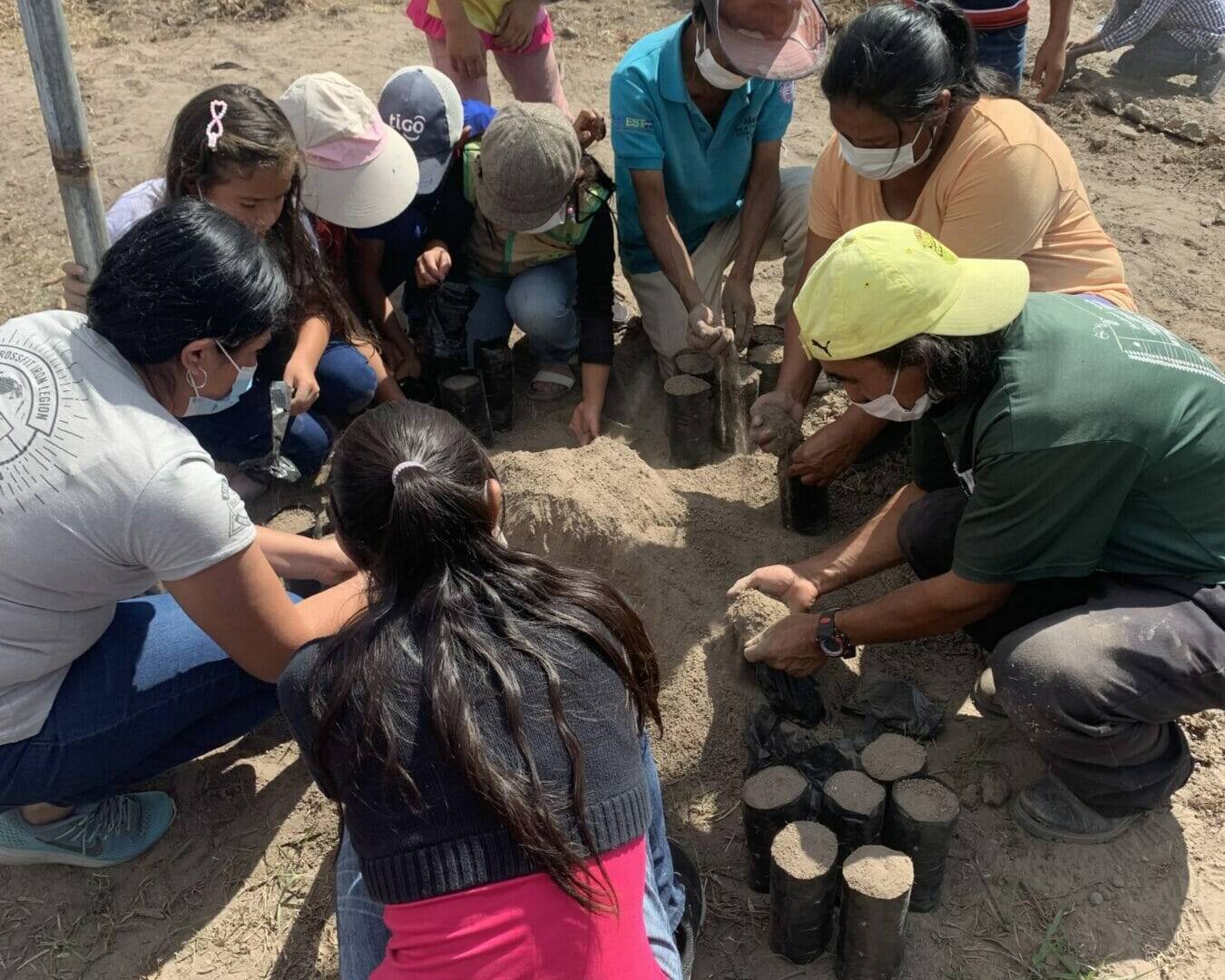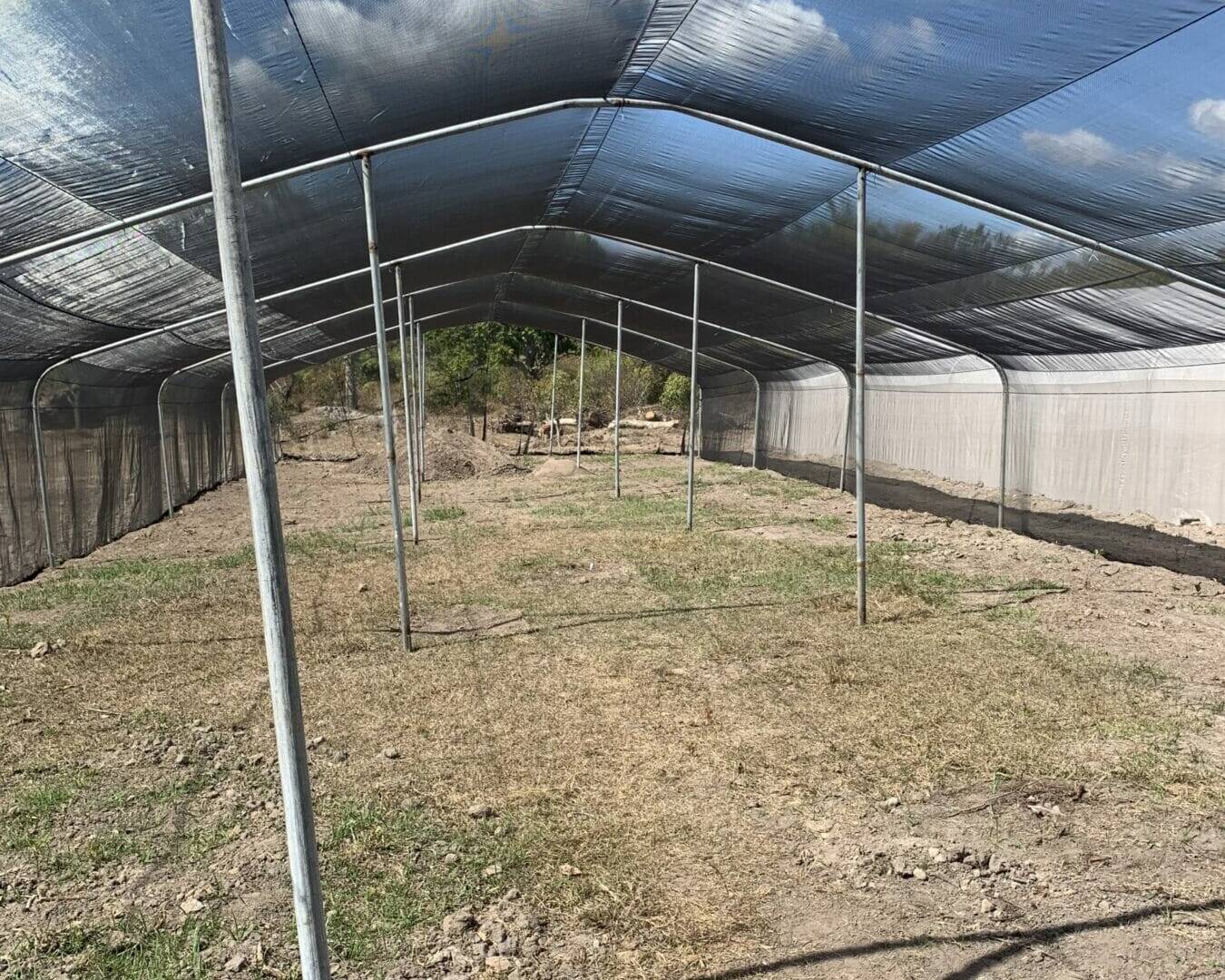On my final day, I got to visit the recently constructed agricultural vocational school in San Antonio. Upon pulling up to the school, students, teachers, parents, and community members were all lined up. They were holding balloons, a cake, and streamers. Everyone was excited to show what they had accomplished. Meanwhile, emotional parents of the students shared how grateful they were for this opportunity. I saw performances from the students. The older group presented what they wanted to be when they grow up. This group has been doing career counseling with CEPUDO’s social worker Miriam. This has helped them to better understand their strengths and interests. Additionally, this will help inform what career path they want to take following graduation. Accordingly, students were to come dressed as their dream job. We saw doctors, midwives, bakers, construction workers, firemen, seamstresses, and even a cowgirl! Unquestionably the smiles and laughter were true testaments to how excited the students were to start thinking about their future and the opportunities that await.

Agriculture Initiatives
Following the performances, I walked around to the other side of the school building. Here, two greenhouses were under construction. CEPUDO’s agronomist Rene has been working with the community to construct the greenhouses and level and prepare the land for planting. In addition, installation of the irrigation systems (drip for the vegetables and spray for coffee plants) has started as have the nurseries. Of note is the commencement of vocational student training. The two greenhouses each have their own purpose. One is a dark greenhouse specific for coffee plants, with a capacity to grow up to 60,000 individual plants. Fruit trees (orange, lemon, mandarin, avocado, and mango) are grown in the greenhouse to provide not only food, but shade for the coffee plants in the first year as they grow. The school then sells these plants to local coffee farmers. This allows them to make a profit and reinvest it into the needs of the school. The second greenhouse is a light greenhouse. This is for growing vegetables like peppers, tomatoes, cucumbers, carrots, beans, and squash. Currently, the mothers of the students are working hard to prepare the land and soil to make flower beds. Significantly, vegetables are cultivated at the school for use in the community.



